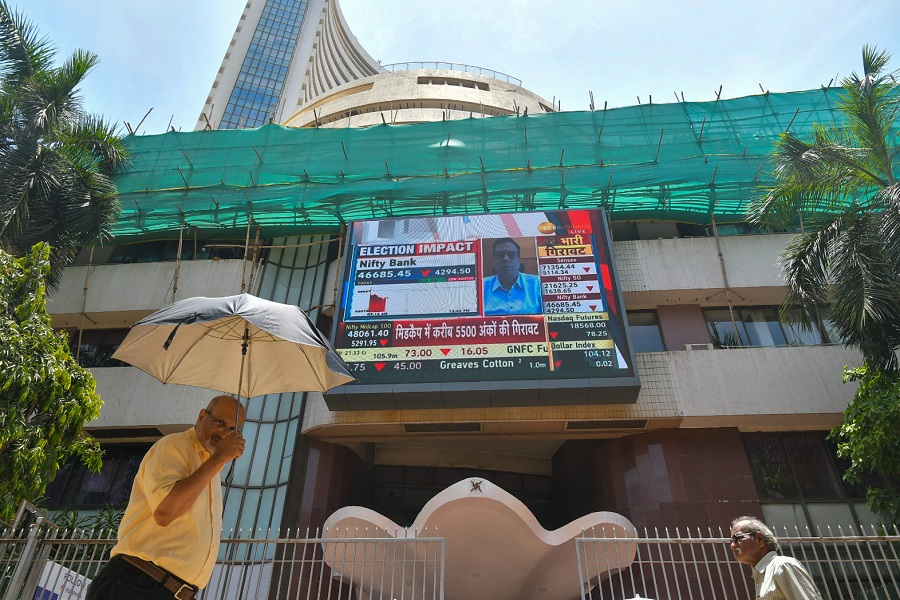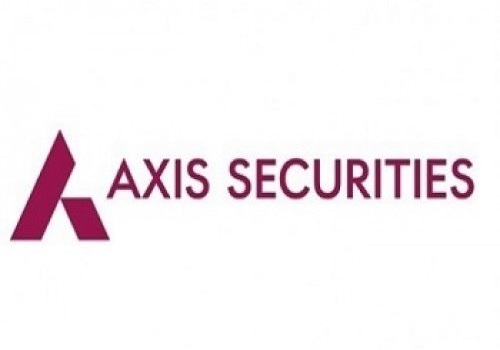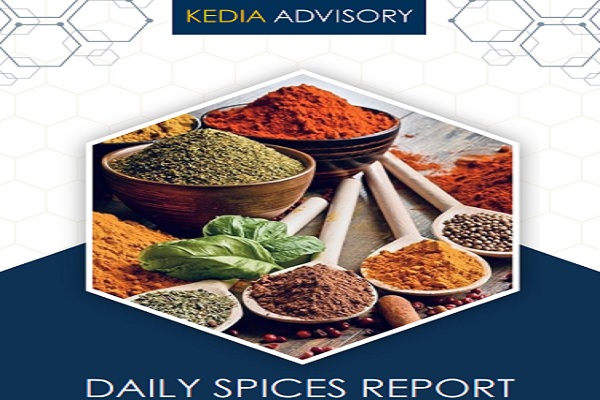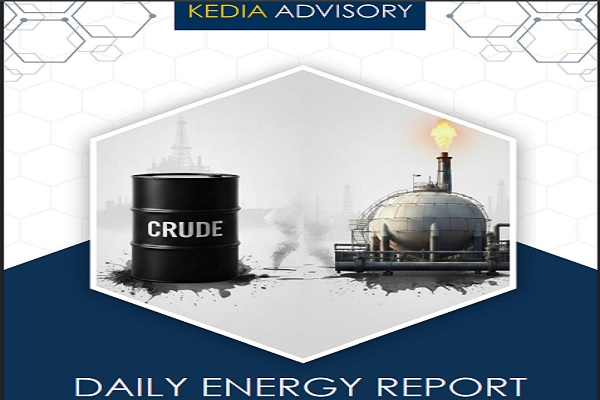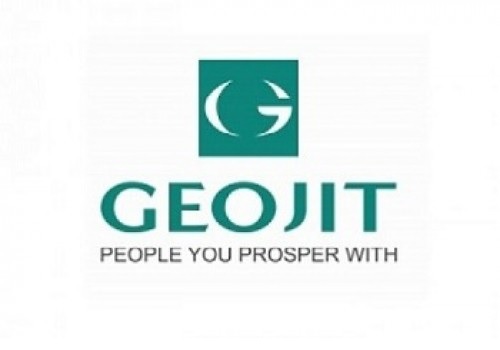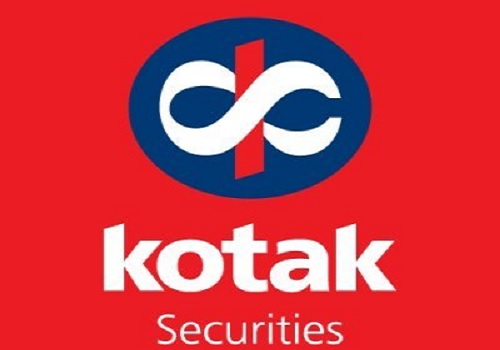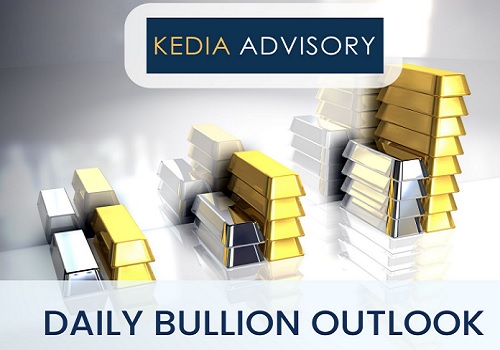Jeera trading range for the day is 18730-19370. - Kedia Advisory

Gold
Gold prices surged by 1% to settle at 99,754, supported by renewed expectations of a Federal Reserve rate cut in September. The upside momentum followed the release of weaker-than-expected U.S. jobs data, with only 73,000 jobs added in July compared to a forecast of 100,000, while unemployment edged up to 4.2%. This shift in labor market conditions significantly boosted market expectations for a rate cut, raising the probability from 45% to 75%. On the geopolitical front, President Trump's announcement of a 10% base tariff and new retaliatory duties further supported safe-haven interest. Gold exports from Switzerland rose sharply by 44% in June, with volumes to the UK hitting their highest level since August 2019, reflecting increased vault demand in London. The total gold held in London vaults rose 2.1% MoM to 8,776 tonnes. Physical demand trends showed mixed signals. While India's discount narrowed due to lower prices, Chinese imports fell 36.3% MoM in June. Overall global demand rose 3% YoY in Q2 2025 to 1,248.8 tonnes, driven by a 78% rise in investment demand and a 21% rise in bar buying. However, jewelry demand dropped 14% due to high prices, and central bank purchases dipped 21%. Supply remained modest despite record prices, with Indian consumers opting for exchanging or pledging jewelry rather than outright selling. Technically, the market is under fresh buying with a 3.62% increase in open interest. Support is seen at 98,705, and a break below could take prices to 97,655. Resistance lies at 100,390, above which prices may test 101,025.
Trading Ideas:
* Gold trading range for the day is 97655-101025.
* Gold rose as the latest US jobs report added to evidence of a cooling labor market.
* The US economy added just 73,000 jobs in July, falling short of the 100,000 projected.
* Markets are now pricing in a 75% probability of a September rate cut—up sharply from 45% prior to the report.
Silver
Silver prices edged higher by 0.26% to settle at 110,258, supported by a weaker U.S. dollar and bullish investment sentiment. The U.S. Dollar Index slipped to 99 from recent highs after July's nonfarm payrolls data came in at just 73,000, missing expectations and prompting a sharp downward revision of prior months’ figures. This labor market weakness reinforced the case for multiple Federal Reserve rate cuts in 2025, enhancing the appeal of non-yielding assets like silver. The macroeconomic backdrop was further complicated by the U.S. administration’s implementation of retaliatory tariffs on the EU, Japan, and Korea, with additional levies on Brazil, Switzerland, and India expected. From an investment standpoint, silver exchange-traded product (ETP) inflows surged by 95 million ounces in the first half of 2025, surpassing total 2024 inflows. Global ETP holdings reached 1.13 billion ounces, just 7% shy of their 2021 peak. Retail investment remained robust in India with a 7% YoY rise, driven by strong price expectations. On the supply-demand front, the silver market is projected to post its fifth consecutive annual deficit in 2025. Industrial fabrication is expected to reach a record 700 million ounces, driven by the green economy, while physical investment may rise 3%. However, jewelry demand is forecast to decline 6%, particularly in India. Technically, fresh buying was noted with a 2.41% rise in open interest to 20,868. Silver has immediate support at 109,250; a break below could see 108,240. Resistance is seen at 111,135, with a move above opening the door to 112,010.
Trading Ideas:
* Silver trading range for the day is 108240-112010.
* Silver gained as US dollar index slumped to 99 from the two-month high of 100.
* US nonfarm payrolls rose by 73K in July 2025, well below expectations of 110K.
* The US unemployment rate rose slightly to 4.2% in July 2025 from 4.1% in June, aligning with market expectations.
Crude oil
Crude oil prices dropped sharply by 2.73% to settle at 5,887, as markets reacted to the escalating global trade tensions and a surprise build in U.S. crude inventories. The decline was primarily driven by concerns over the economic fallout from President Trump’s reaffirmed 10% global base tariff and newly announced retaliatory duties of up to 41% on nations without trade agreements with the U.S. Additionally, a 40% levy on rerouted goods has further amplified fears of reduced global trade flows, potentially weakening oil demand. Adding to the bearish sentiment, U.S. crude oil inventories surged by 7.698 million barrels in the week ending July 25—the largest build in six months and well above expectations for a 2 million-barrel draw, according to the EIA. Cushing inventories also rose by 690,000 barrels. However, gasoline stocks dropped by 2.725 million barrels, signaling robust fuel consumption, while distillate stocks increased by 3.635 million barrels. Despite these demand concerns, prices found some support from geopolitical risks. President Trump threatened to impose 100% secondary tariffs on buyers of Russian crude and warned China of harsh penalties if it continues importing oil from Russia. Meanwhile, OPEC+ is expected to approve an output hike for September, although the size remains under discussion. Technically, crude is under long liquidation as open interest plunged by 21.22% to 7,631. Immediate support is seen at 5,795, with further downside possible to 5,703. Resistance lies at 6,034, and a move above may lead to testing 6,181.
Trading Ideas:
* Crudeoil trading range for the day is 5703-6181.
* Crude oil fell amid concerns over US tariffs hurting global demand.
* Trump reaffirmed 10% global base tariff, adding steep retaliatory duties.
* China warned of harsh penalties for continuing Russian crude oil purchases.
Natural gas
Natural gas prices slipped by 0.55% to settle at 270.3, pressured by persistent oversupply concerns and forecasts for milder weather in the near term. The latest data from the U.S. Energy Information Administration (EIA) revealed a larger-than-expected inventory build of 48 billion cubic feet (bcf) for the week ending July 25, 2025, significantly above the anticipated 38 bcf. This surplus injection has pushed total gas inventories to 3.123 trillion cubic feet—3.8% lower than a year ago but still 6.7% above the five-year average, underscoring a well-supplied market. Supply-side pressures continued to dominate sentiment, with July seeing a 10% decline in natural gas prices, ending a two-month uptrend. Average daily production in the Lower 48 states reached a record 107.5 billion cubic feet per day (bcfd) in July, up from June’s 106.4 bcfd, further exacerbating the supply glut. Meanwhile, cooler near-term weather forecasts are expected to reduce demand from the power sector, though traders remain watchful for potential heatwaves later in August that could revive air-conditioning use and gas consumption. According to the EIA's Short-Term Energy Outlook, both U.S. natural gas production and consumption are projected to hit record highs in 2025, with output reaching 105.9 bcfd and consumption at 91.3 bcfd. Technically, the market is witnessing fresh selling pressure with a 1.39% increase in open interest to 36,184. Immediate support is seen at 266.9, with further downside potential to 263.5. Resistance is likely at 273.7, and a break above may test 277.1.
Trading Ideas:
* Naturalgas trading range for the day is 263.5-277.1.
* Natural gas dropped pressured by oversupply concerns and mild weather forecasts.
* EIA reported 48 bcf injection, beating forecast of 38 bcf
* Lower 48 output hit 107.5 bcfd, surpassing June’s previous record.
Copper
Copper prices edged up by 0.41% to settle at 879.7 as the market digested the U.S. administration’s surprise move to exclude refined copper from its recently imposed 50% import tariffs. However, the upside remains capped due to a significant rise in copper inventories. LME-registered warehouse stocks doubled in July, reaching a three-month high of 127,475 metric tons, while Comex inventories soared to a 21-year high of 257,915 short tons—a 176% jump between March and July. Despite this, the premium of Comex futures over LME prices is limiting outflows from the U.S., preventing immediate pressure on international supplies. On the global supply front, copper production saw an uptick. Chile’s Codelco reported a 9% rise in output in H1 2025, and Antofagasta posted an 11% increase. Meanwhile, the global refined copper market flipped into a surplus of 97,000 metric tons in May, compared to an 80,000 metric ton deficit in April, according to the International Copper Study Group (ICSG). China’s copper imports rebounded 8.7% in June, hitting 464,000 metric tons, yet remain below 2024 levels, with inventories being strategically shifted to the U.S. ahead of tariff implementation. On the feedstock side, copper concentrate imports softened slightly to 2.35 million tons in June, although demand remains strong with new Chinese smelters ramping up. Technically, copper is witnessing short covering, with open interest falling 6.62% to 6,631. Key support lies at 875.5, with deeper correction potential towards 871.3. Resistance is expected at 883.4, and a breakout could take prices to 887.1.
Trading Ideas:
* Copper trading range for the day is 871.3-887.1.
* Copper steady as market weighs Trump’s surprise exclusion of refined metal from tariffs
* LME stocks more than doubled in July and are at a three-month high of 127,475 metric tons.
* Copper inventories in warehouses monitored by the Shanghai Futures Exchange fell 1.2% from last Friday
Zinc
Zinc prices declined by 1.34% to settle at 262 amid ongoing demand concerns triggered by weak economic signals from China. The country’s manufacturing activity contracted in July, with export orders falling for the fourth consecutive month. Additionally, factory production declined, prompting job cuts, thereby reflecting broader economic weakness and pressuring industrial metal demand. Zinc inventories in Shanghai Futures Exchange-monitored warehouses also rose by 3.9% from last Friday, indicating a near-term supply overhang. Despite bearish demand signals, the downside in zinc remains somewhat limited, supported by China's stimulus efforts to stabilize growth in the machinery, automobile, and electrical equipment sectors. On the supply side, tightening fundamentals are emerging. Production at South China smelters has been disrupted due to heavy rainfall, and zinc output from Teck Resources' Red Dog Mine—one of the world’s largest—is down 20% year-on-year in Q1. Globally, the zinc market flipped into a deficit of 44,100 metric tons in May from a surplus of 17,300 tons in April, according to the International Lead and Zinc Study Group (ILZSG). However, for the first five months of 2025, the market still recorded a surplus of 88,000 tons, although this is significantly lower than the 214,000-ton surplus seen in the same period last year. Technically, zinc is undergoing long liquidation with open interest dropping by 5.07% to 3,258. Support is now seen at 260.2, and a breach could lead to a further drop toward 258.3. Resistance is pegged at 264.8, with a potential move to 267.5 if that level is surpassed.
Trading Ideas:
* Zinc trading range for the day is 258.3-267.5.
* Zinc dropped as demand concerns lingered as China's manufacturing activity contracted in July.
* New export orders in China declined for a fourth consecutive month, while falling production led factories to cut jobs.
* Zinc inventories in warehouses monitored by the Shanghai Futures Exchange rose 3.9% from last Friday.
Aluminium
Aluminium prices declined by 0.34% to settle at 249.6, tracking weakness in other base metals as markets adjusted their expectations regarding China's fiscal stimulus. While the Chinese government reiterated its commitment to maintaining accommodative fiscal and monetary policies, it refrained from announcing direct consumer-focused stimulus. This tempered optimism about an immediate rebound in industrial expansion, pressuring aluminium prices. Despite the pullback, downside remained limited due to tightening global supply and the outlook for improved demand from China. The rise in aluminium inventories on the Shanghai Futures Exchange by 1.5% added to near-term supply pressure. However, Beijing’s pledge to stabilize industrial growth and the announcement of a CNY 1.2 trillion hydroelectric dam project point toward continued infrastructure-led stimulus, which should support demand. On the production front, China’s aluminium output in June stood at 3.81 million metric tons, up 3.4% year-on-year, while H1 2025 production totaled 22.38 million tons, a 3.3% rise. Still, monthly output fell 3.23% from May. Export activity weakened in June with 489,000 tonnes shipped, down from May’s 547,000 tonnes, reflecting reduced overseas demand. Technically, the aluminium market is undergoing long liquidation, evidenced by a 3.57% drop in open interest to 4,349. Immediate support is at 248.6, with a further decline possible toward 247.5. Resistance is seen at 250.9, and a breakout could drive prices to 252.1.
Trading Ideas:
* Aluminium trading range for the day is 247.5-252.1.
* Aluminium falls tracking other base metals drop on tempered hopes of China fiscal support
* China is facing an August 12 deadline to reach a durable tariff agreement with Trump's administration.
* Aluminium inventories in warehouses monitored by the Shanghai Futures Exchange rose 1.5% from last Friday.
Turmeric
Turmeric prices rebounded by 2.71% to settle at 13,118 amid short covering, following a recent dip driven by expectations of increased acreage due to favourable monsoon conditions. Arrivals edged higher to 13,660 quintals from 11,940 in the previous session, reflecting a marginal increase in availability. However, despite the expected 15–20% rise in turmeric sowing this season, overall production is not projected to grow proportionately. This is due to productivity concerns, with untimely rains and crop disease—particularly in the Nanded region—resulting in smaller rhizomes and crop rot. For the 2024–25 season, the sown area has risen to 3.30 lakh hectares, up from 3 lakh hectares the previous year, yet estimated yields are expected to fall 10–15%. In 2023–24, turmeric output was reported at 10.75 lakh tonnes. Persistent concerns over arrivals and lower yield prospects continue to limit the downside for prices. Robust market activity is evident in Duggirala, where fresh produce is commanding a price premium over older stocks due to better quality. On the export front, demand remains strong. Turmeric exports rose by 8.37% to 34,162.28 tonnes during April–May 2025, with May shipments up 10.28% year-on-year. Technically, the market is under short covering, with open interest dropping by 10.48% to 14,225. Support is now seen at 12,770, with further downside potential toward 12,422. Resistance is pegged at 13,396, and a break above this could lead prices toward 13,674.
Trading Ideas:
* Turmeric trading range for the day is 12422-13674.
* Turmeric gained on short covering after prices dropped due to expected increase in acreage.
* Turmeric acreage is expected to increase by 15-20% this season, supported by low competitive crop prices.
* In April 2025 around 14,956.80 tonnes were exported as against 14,109.10 tonnes in April 2024 showing a rise of 6%.
* In Nizamabad, a major spot market, the price ended at 13850.55 Rupees gained by 1 percent.
Jeera
Jeera prices edged up by 0.63% to settle at 19,110 on short covering, following recent declines driven by subdued domestic and export demand post the retail season. The price rebound comes as traders respond to bargain buying, but overall market sentiment remains cautious due to ongoing sluggishness in foreign demand and ample domestic availability. The conclusion of the retail season and inactivity from overseas buyers have weighed on prices. Traders estimate that although farmers still hold about 20 lakh bags of jeera, only 3–4 lakh bags are likely to be traded by season’s end, potentially leaving a large carry-forward stock of around 16 lakh bags. Current season production is expected to match last year’s levels, supported by favorable crop conditions. However, India’s export performance has been disappointing. Jeera exports during April–May 2025 fell by 27.07% to 42,925.74 tonnes from 58,860.98 tonnes a year earlier. On a brighter note, May exports rose 11.26% year-on-year and jumped 17.68% from April, showing some revival in overseas demand. On the global front, production from other major suppliers like Syria, Turkey, and Afghanistan remains limited due to geopolitical and weather-related challenges. China’s jeera production estimates have been revised downward to 70,000–80,000 tons due to adverse weather. Technically, the market witnessed a 4.48% drop in open interest to 5,055, suggesting short covering activity. Jeera finds immediate support at 18,920, with further downside possible to 18,730. Resistance is seen at 19,240, and a break above could push prices towards 19,370.
Trading Ideas:
* Jeera trading range for the day is 18730-19370.
* Jeera gained on short covering after prices dropped due to weak domestic post retail season.
* Only 3-4 lakh bags are expected to be traded by the end of the season, leaving a carry-forward stock of about 16 lakh bags
* Total arrivals witnessed a marginal increase to 12,000 bags (55 kg each) as against 11,800 bags on the previous day.
* In Unjha, a major spot market, the price ended at 19537.45 Rupees dropped by -1.05 percent.
Views express by all participants are for information & academic purpose only. Kindly read disclaimer before referring below views















